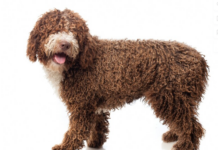Last Updated on August 26, 2024 by Dogs Vets
The Doberman Pinscher is a sleek, muscular dog breed known for its intelligence, loyalty, and protective nature.Originally bred in Germany in the 19th century, Dobermans were initially used as guards and messenger dogs.
Doberman Pinscher Key Characteristics:
- Temperament: Intelligent, loyal, protective, confident, and energetic
- Size: Medium-large; males typically weigh 60-75 pounds (27-34 kg) and stand 26-28 inches (66-71 cm) tall at the shoulder; females are slightly smaller.
- Coat: Short, smooth coat that comes in various colors, including black, black and tan, fawn, and blue.
- Lifespan: 10-13 years
History and Origin:
- German Origin: The Doberman Pinscher was developed in Germany in the late 19th century by a tax collector named Louis Doberman.
- Purpose: Dobermans were originally bred to be guard dogs and messengers. Their intelligence, athleticism, and protective nature made them ideal for these roles.
- Popularity: The breed gained popularity outside of Germany after World War II and has since become a beloved companion dog worldwide.
Care and Training:
- Exercise: Dobermans are active dogs and require regular exercise. Daily walks, playtime, and mental stimulation are essential to keep them happy and healthy.
- Training: These dogs are intelligent and eager to please, making them relatively easy to train. Positive reinforcement methods are recommended.
- Socialization: Early socialization is crucial to help Dobermans interact well with other dogs and people.
- Grooming: Their short coat requires minimal grooming, with occasional brushing to remove loose hair.
Health:
- Generally Healthy: Dobermans are generally healthy dogs with few breed-specific health problems.
- Common Issues: Some Dobermans may be prone to health conditions such as dilated cardiomyopathy (a heart condition) and von Willebrand disease (a bleeding disorder). Regular veterinary checkups are recommended to monitor for any potential health issues.
Doberman Pinscher: Male vs. Female
While there are no significant differences in temperament between male and female Doberman Pinschers, there are some physical and behavioral distinctions to consider:
Size:
- Males: Typically larger and heavier than females.
- Females: Smaller and more compact.
Behavior:
- Males: May exhibit more dominant or territorial behaviors, especially if not neutered.
- Females: Can be more affectionate and nurturing, particularly when they have puppies.
Choosing between a male or female Doberman Pinscher often comes down to personal preference. Consider your lifestyle, the size of your home, and your desired level of activity when making your decision.
Conclusion:
The Doberman Pinscher is a loyal, intelligent, and protective breed that makes a wonderful companion. Their athletic build, elegant appearance, and confident demeanor make them a popular choice for many dog lovers. With proper care,training, and socialization, Dobermans can be excellent family dogs.
References:
- American Kennel Club (AKC): https://www.akc.org/dog-breeds/doberman-pinscher/
- Doberman Pinscher Club of America (DPCA): https://www.dpca.org/
- The American College of Veterinary Behaviorists: [invalid URL removed]
Note: These references may provide additional information on the breed, including any specific differences between males and females.

















